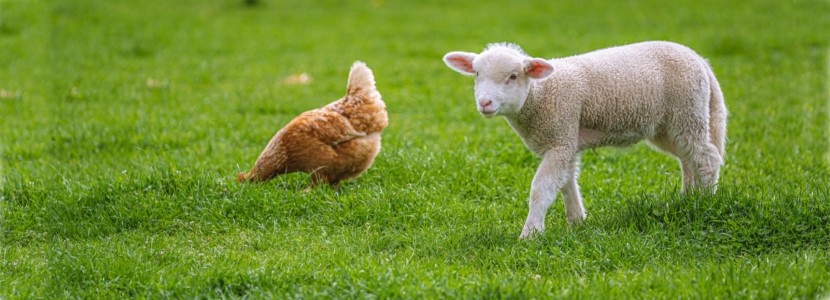 08 Apr 2022
08 Apr 2022
Copper: nutritional aspects of interest for animal production
History
In 1928, Hart first reported that rats needed copper (Cu) for growth and formation of hemoglobin. Soon after, the role of Cu in sheep and cattle was recognized.
Fergurson et al. in 1938 published evidence of the importance of Cu when dairy cow diets had an excess of Molybdenum.
In 1948 Braude observed that pigs licking Cu pipes grew faster. Later, Barber et al. reported increased growth with pharmacological concentrations of (Cu) 125 to 250 ppm (1957).
Because poultry and pigs are not ruminants and mainly consume grains such as corn and soybeans, they are less prone to present evident Cu and Zinc deficiencies. Considering they are in production environments where they are fed “balanced” diets.
However, it has been hypothesized that health could be affected without overt signs of traditional deficiency.
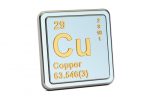
Metabolic mechanisms and functions
Based on body weight, the concentration of copper in liver and plasma is higher in a newborn mammal than at any other time within the life cycle.
In the sow,Cu, Fe and Zn concentrations in colostrum are higher than in milk. Mammals have been shown to provide hepatic copper to the fetus and newborn regardless of the mother’s copper status (Hill et al., 2013).

Mehra and Brenner (1984) found a form of metallothionein (MT) in pigs fed high concentrations of Cu in the diet that was not present in sheep. This produced one of the first differences in copper handling mechanisms between sensitive and non-mineral-sensitive species.
Copper deficiency
[register]
![]() Ovine
Ovine
Cu deficiency in sheep can present itself with any of the following symptoms:
1) Anemia (hipocromic, macrocitic)
2) Neonatal ataxia
3) Bone disorders
4) Poor growth and appetite
5) Defective keratinazation of wool
6) Infertility often associated with small, dead fetuses
Woollims et al. (1984) found that lambs with hypocupremias had higher mortality rates at all ages and that Cu deficiencies increased infection susceptibility.
Underwood and Suttle (2010) pointed out that when estimating copper requirements of sheep, in addition to age and physiological state, the amount of Fe, S, Mo and Zn in the diet should be considered. This is due to the fact that these minerals affect Cu absorption.
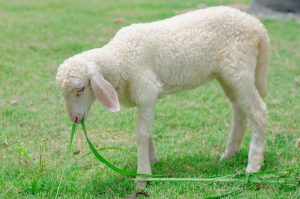
Internal parasites, especially Haemonchus contortus, are a major problem in sheep production. This is particularly a problem as sheep and goats have developed resistance to the currently available antihelmintics. Amongst some of the current management tools, copper oxide particles are useful in parasite load reduction and in reducing grass contamination.
![]() Bovine
Bovine
Copper deficiency is one of the most common problems in cattle worldwide:
![]() When copper intake is inadequate, plasma concentrations may appear normal due to mineral mobilization from the liver. However, metabolic functions begin to see themselves affected (Engle, 2001).
When copper intake is inadequate, plasma concentrations may appear normal due to mineral mobilization from the liver. However, metabolic functions begin to see themselves affected (Engle, 2001).
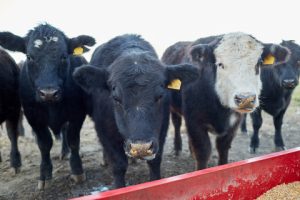
![]() Pigs
Pigs
Pigs rarely need supplements to meet their minimum needs if forage cereals are the base of their diet.
Pharmacological Cu (125 to 250 ppm) in pig diets improves feed efficiency and growth in weaning, growth and finishing piglets.
![]() Poultry
Poultry
Koutsos and Arias (2007) reported that the addition of Cu sulfate in broiler feed resulted in better performance.
![]() Kim et al. (2016) found that the concentration of Cu in egg yolk and feathers could be used to determine the relative bioavailability of copper for hens. Using various techniques and statistical parameters for the health of hens and the production and quality of eggs, Berwanger et al. (2018) have estimated that Cu requirement for breeding hens are 12.5 ppm
Kim et al. (2016) found that the concentration of Cu in egg yolk and feathers could be used to determine the relative bioavailability of copper for hens. Using various techniques and statistical parameters for the health of hens and the production and quality of eggs, Berwanger et al. (2018) have estimated that Cu requirement for breeding hens are 12.5 ppm

Copper poisoning
In sheep, there are breeds more susceptible to Cu deficiency and others to toxicity, such as Texel and dairy breeds.
Toxicity due to Cu depends on the pathway, source and dose. In acute poisoning by ingestion, gastrointestinal irritation, intravascular hemolysis, liver failure and shock appear. On the other hand, the injection of copper produces hepatic and renal failure.
When the liver’s ability to handle copper is exceeded, chronic poisoning occurs as an acute hemolytic crisis.
![]() Goats are less susceptible than sheep to estimated large copper intakes.
Goats are less susceptible than sheep to estimated large copper intakes.
![]() In pigs, toxicity is observed at 500ppm and at 1000ppm results in greater sudden lethality.
In pigs, toxicity is observed at 500ppm and at 1000ppm results in greater sudden lethality.
Copper interrelation with other minerals
Molybdenum and sulfur in ruminants can affect copper absorption. Cattle grazing high fescue (Festuca arundinacea Schreb) have been reported to reduce hepatic and plasma concentrations of Cu and ceruloplasmin ferroxidase activity (Stoszek et al. , 1986).
High concentrations of Fe in the diet interact with Cu in the gut and reduce its absorption.
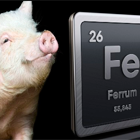
Iron interrelationship was reported in pigs fed a low copper diet where hepatic Fe was twice as high compared to piglets fed 5 to 10 ppm Cu with 50 times more hepatic copper (Hill et al., 1983).
Iron is known to increase in autumn forages and as a result copper absorption is reduced. However, Underwood and Suttle (1999) hypothesized that Cu absorption is impaired in ruminants as a result of S in the diet, and not just Fe.
While aluminum has not been reported to alter Cu concentrations, a disorder called Simmental’s multifocal symmetric encephalopathy has been described in Canada, Australia, and New Zealand. In case studies, aluminum concentrations were elevated and Cu and Mn concentrations were deficient in the liver.
Finally, long-term zinc supplementation (2000 to 3000 ppm Zn oxide) in weaning pigs resulted in the depletion of body copper reserves(Carlson et al., 1996).
[/register]
You may also want to read: What are the minerals that interest us due to their antioxidant function? (spanish content)
Source: Hill and Shannon, 2019. Biol Trace Elem Res. 2019; 188(1): 148–159.
Subscribe now to the technical magazine of animal nutrition
AUTHORS

Nutritional Interventions to Improve Fertility in Male Broiler Breeders
Edgar Oviedo
The Use of Organic Acids in Poultry: A Natural Path to Health and Productivity
M. Naeem
Synergistic Benefits of Prebiotics and Probiotics in Poultry, Swine, and Cattle
Gustavo Adolfo Quintana-Ospina
Hybrid Rye Potential in Laying Hen Feed Rations
Gwendolyn Jones
A day in the life of phosphorus in pigs: Part I
Rafael Duran Giménez-Rico
Use of enzymes in diets for ruminants
Braulio de la Calle Campos
Minerals and Hoof Health in the Pregnant Sow
Juan Gabriel Espino
Impact of Oxidized Fats on Swine Reproduction and Offspring
Maria Alejandra Perez Alvarado